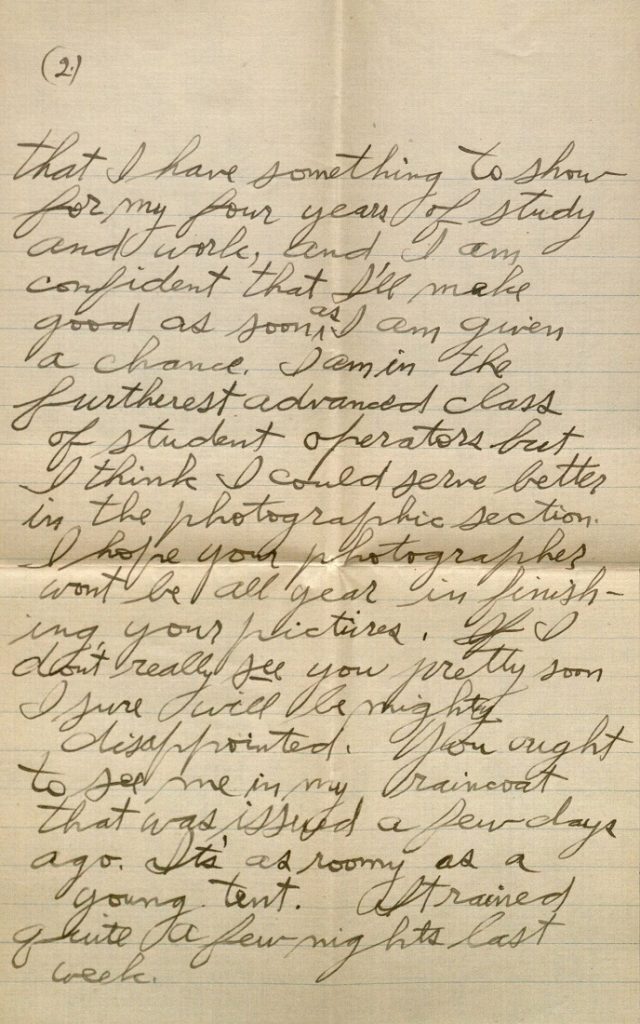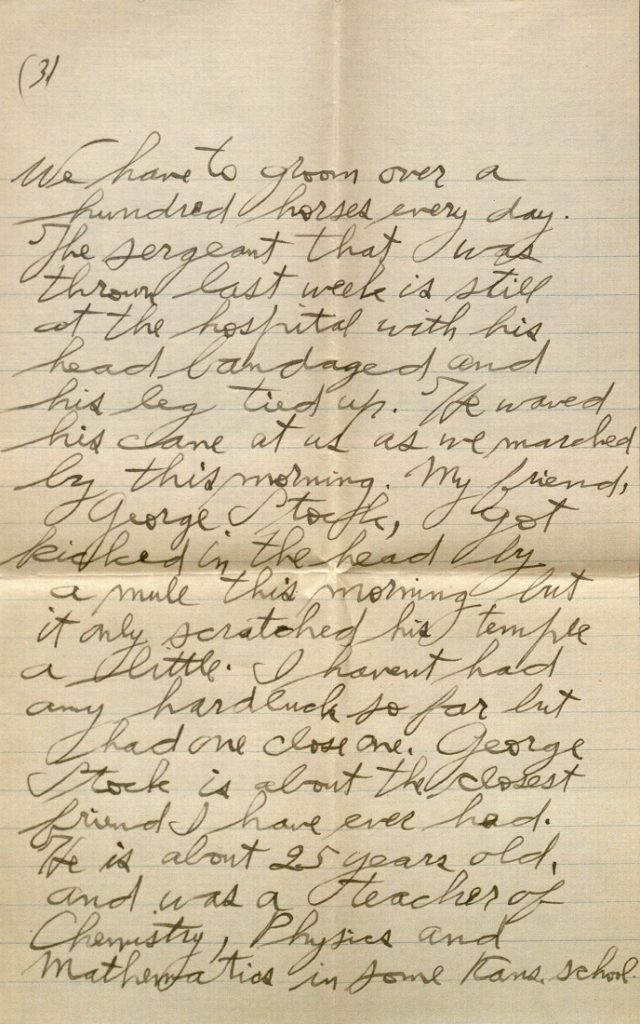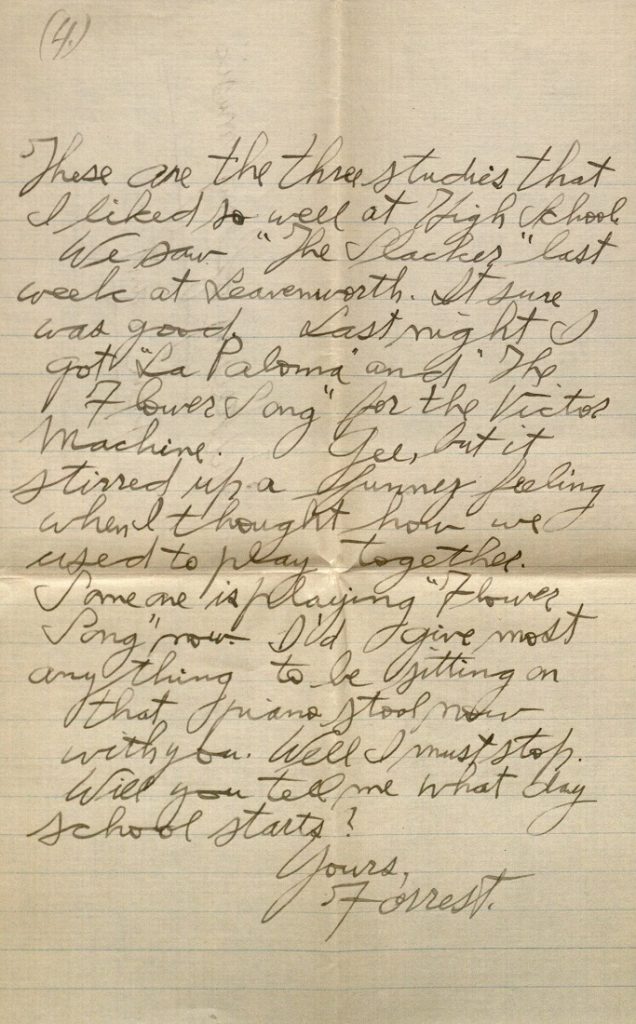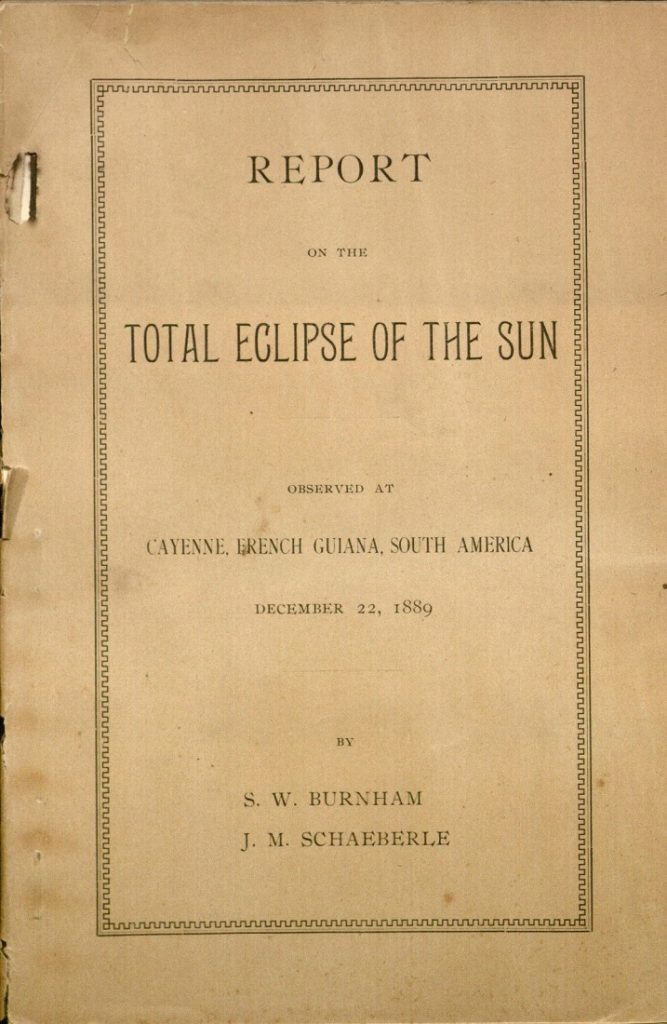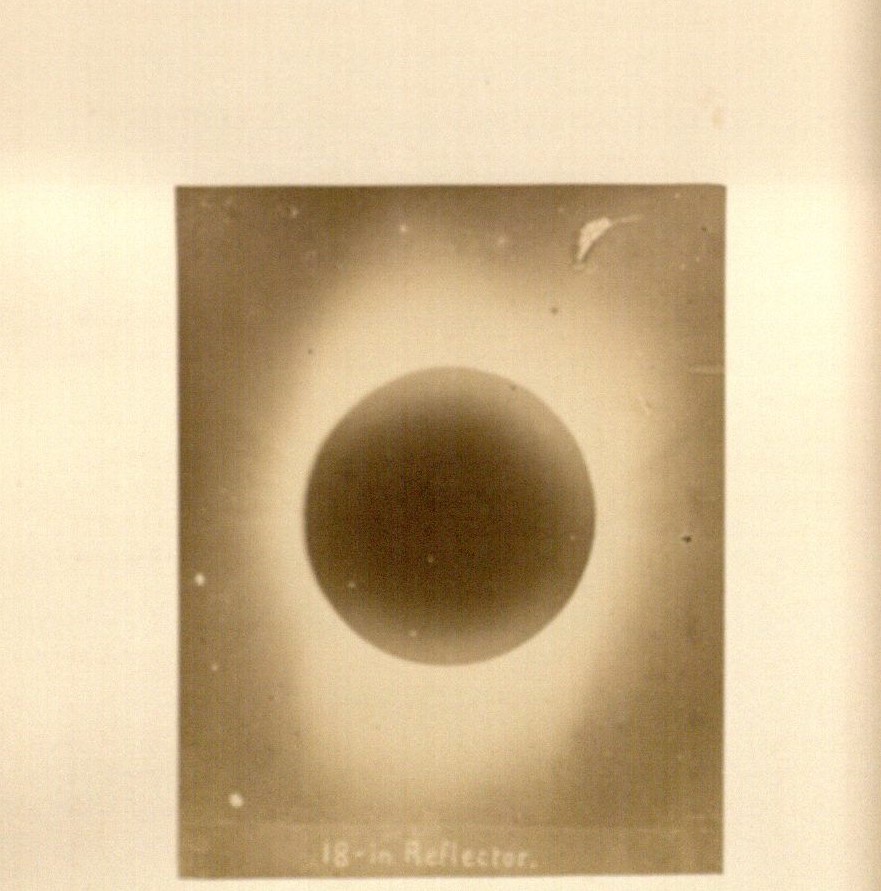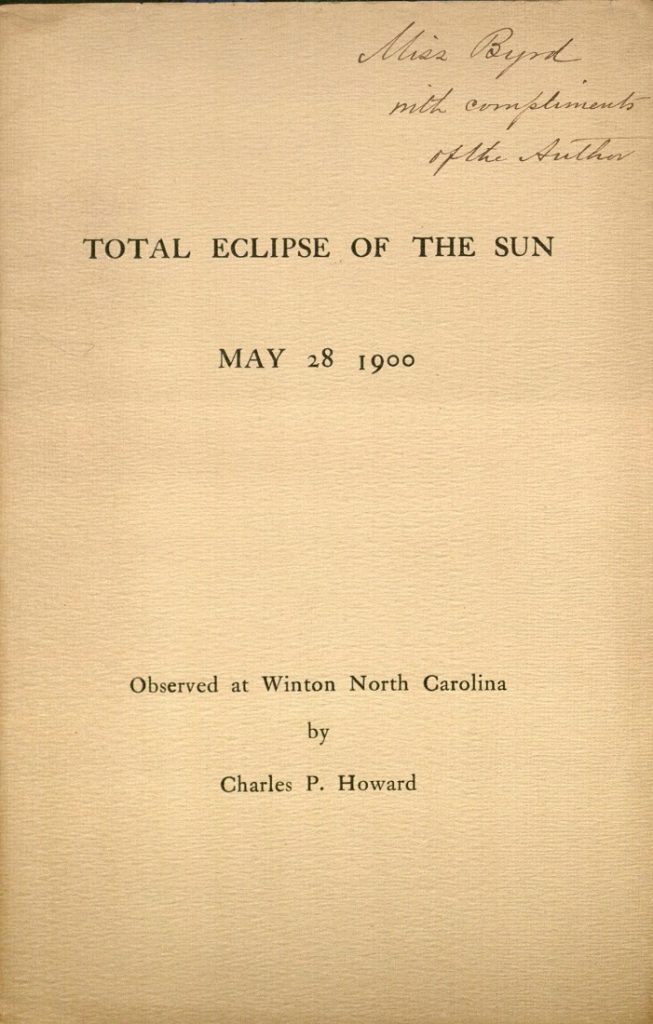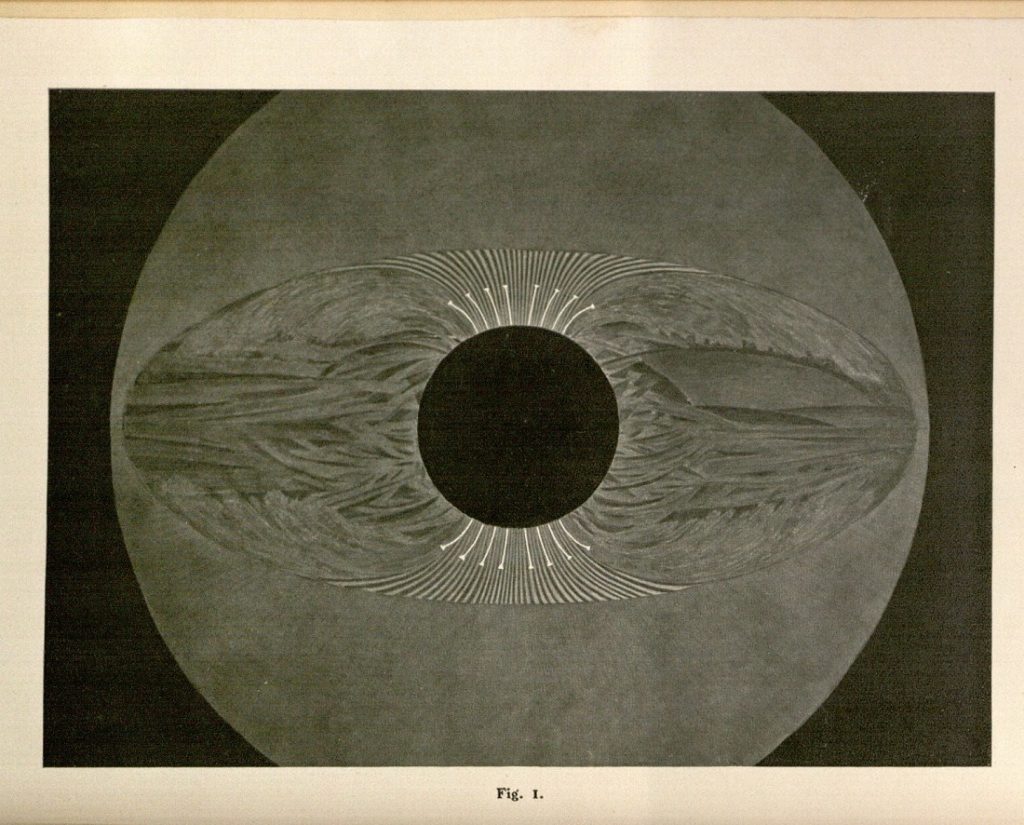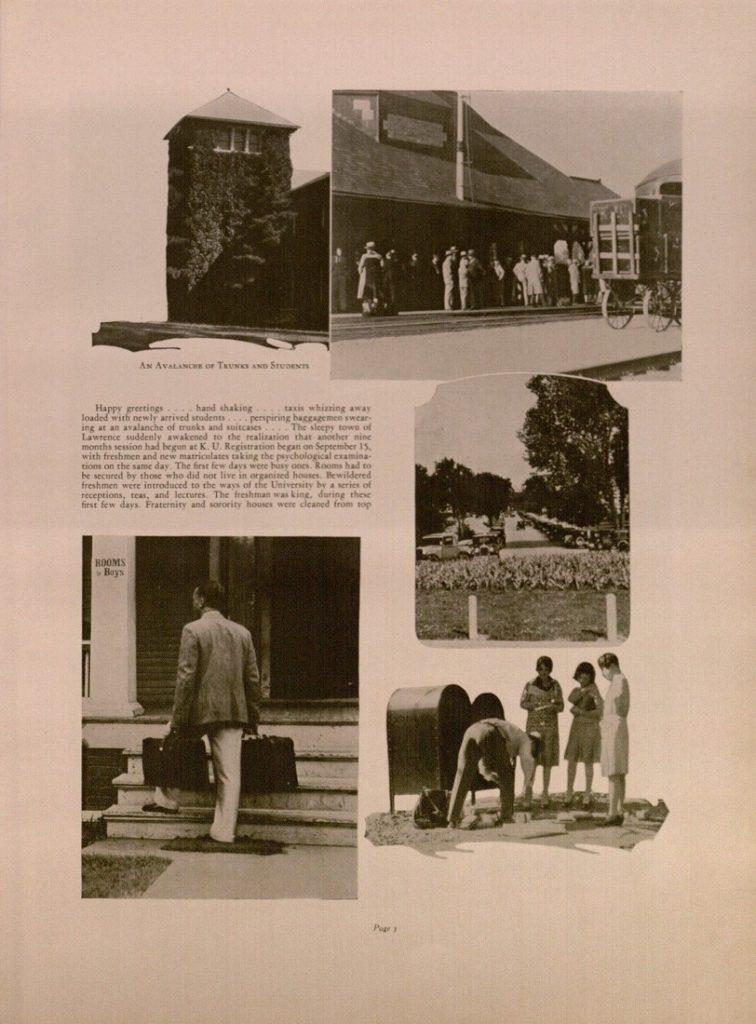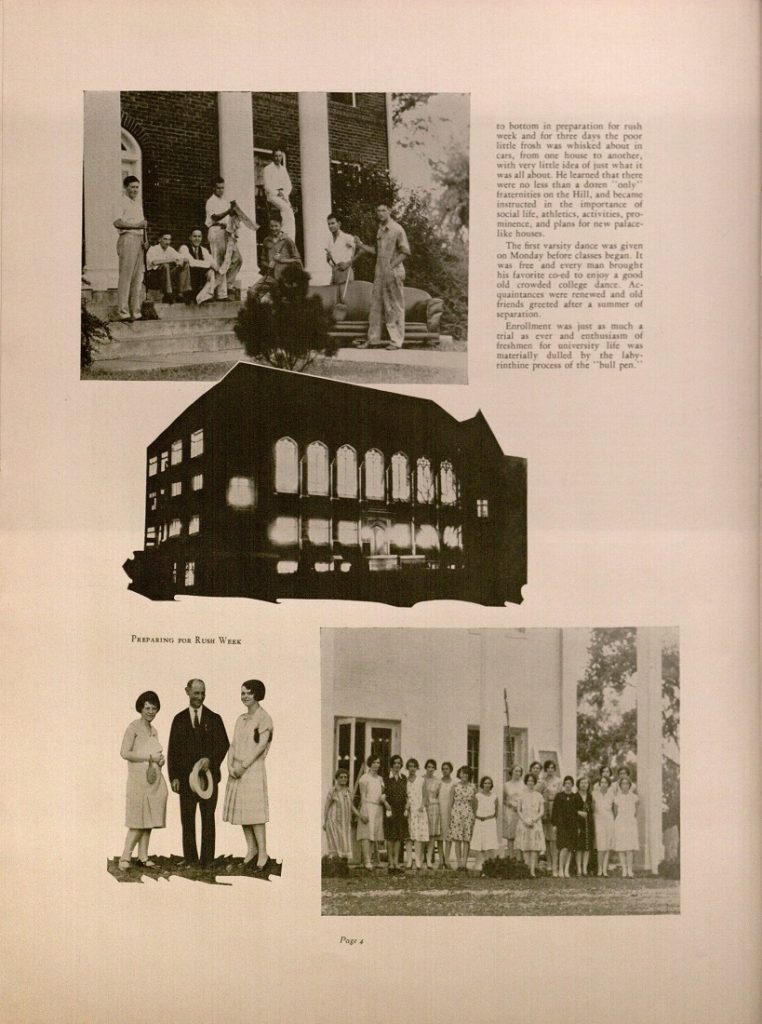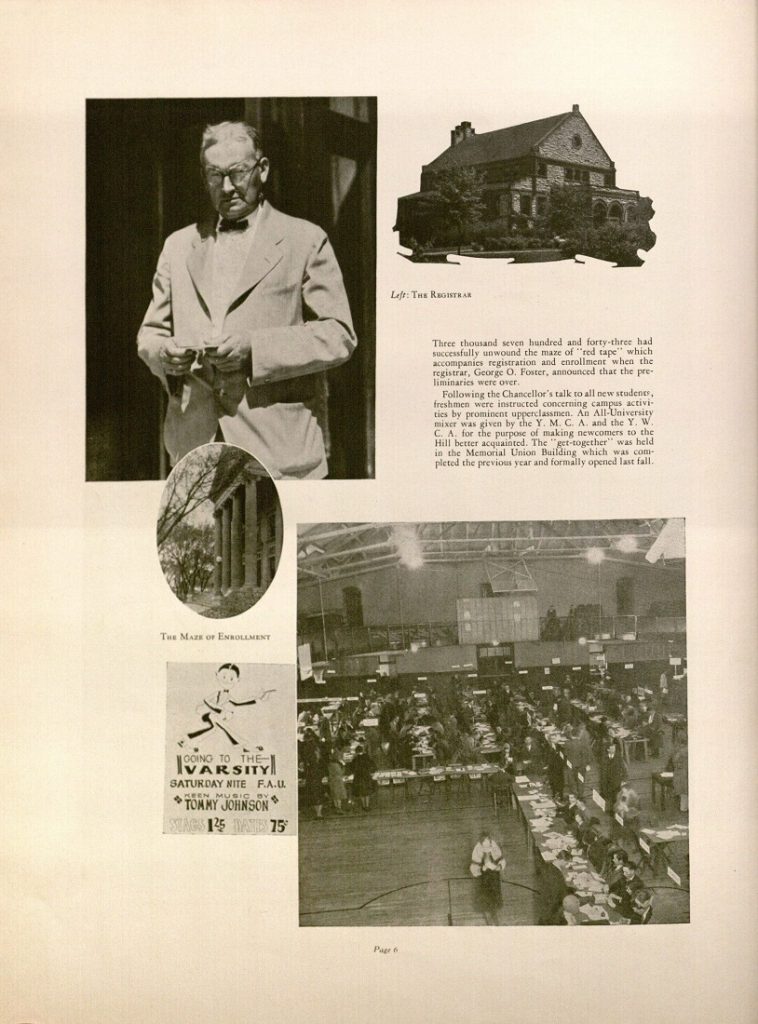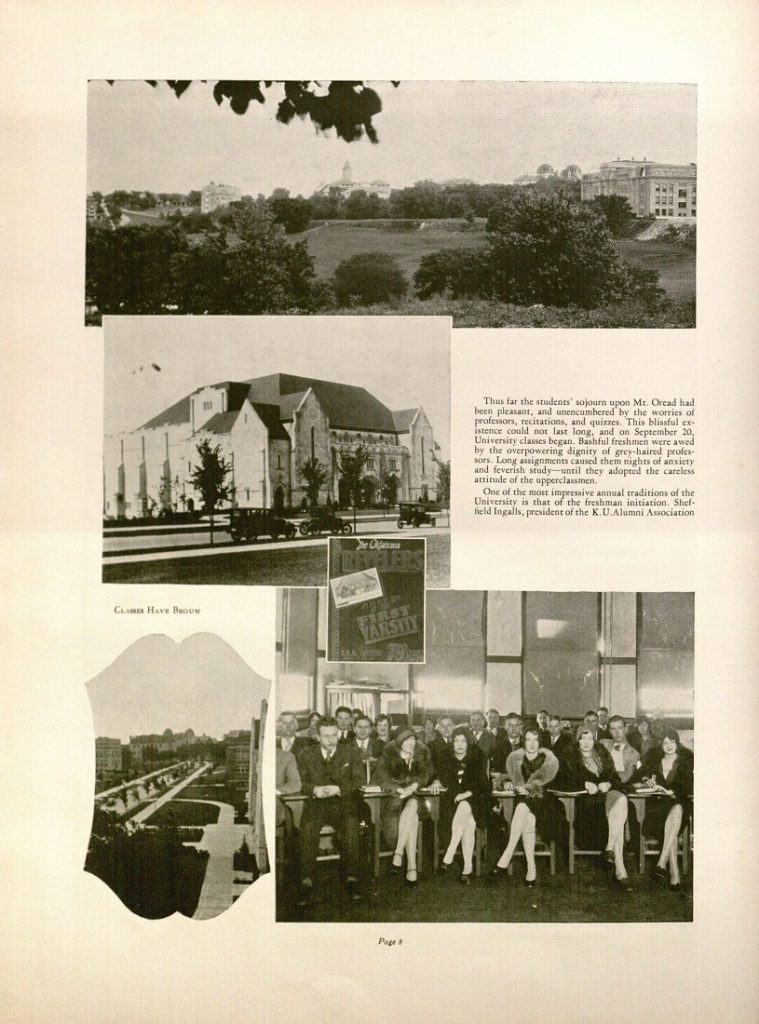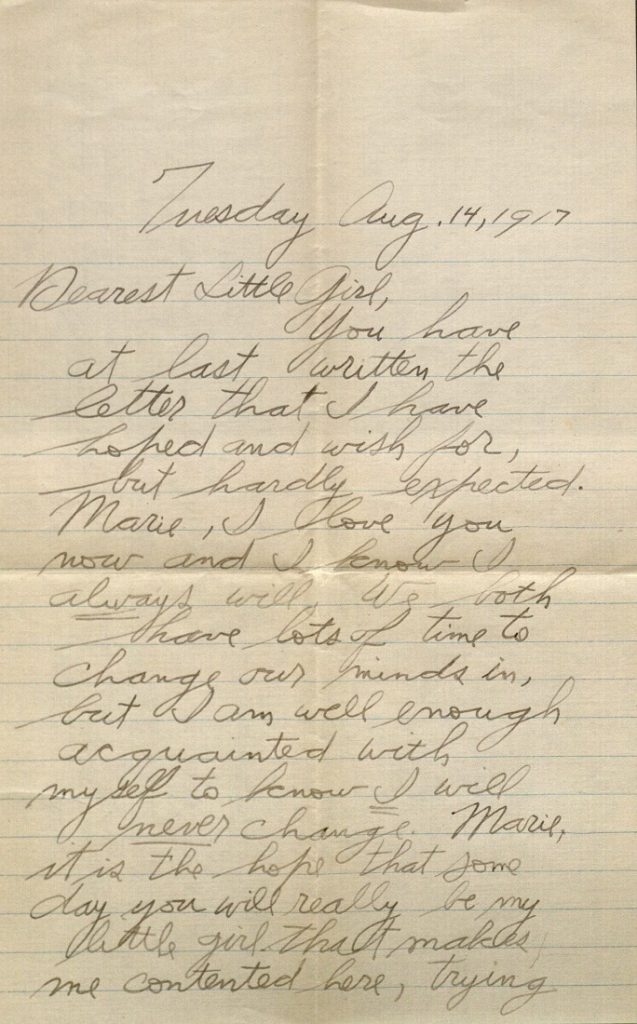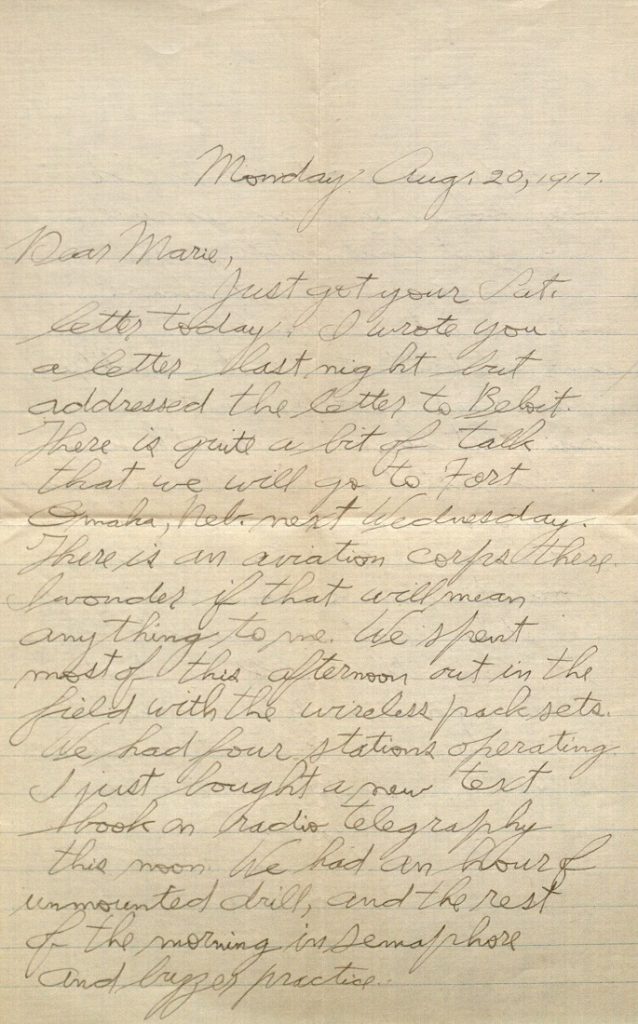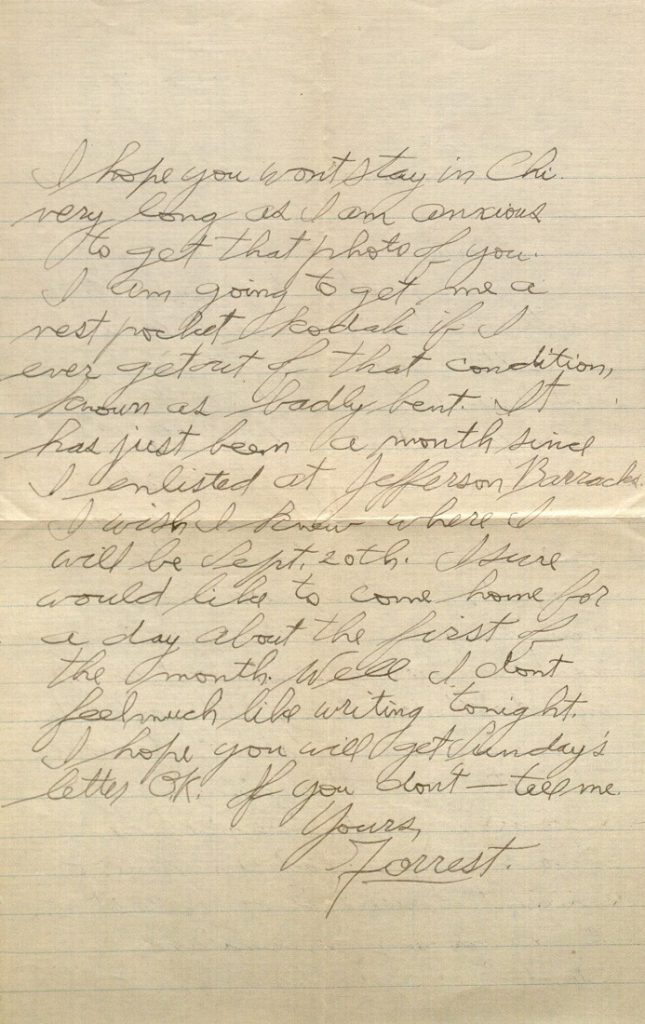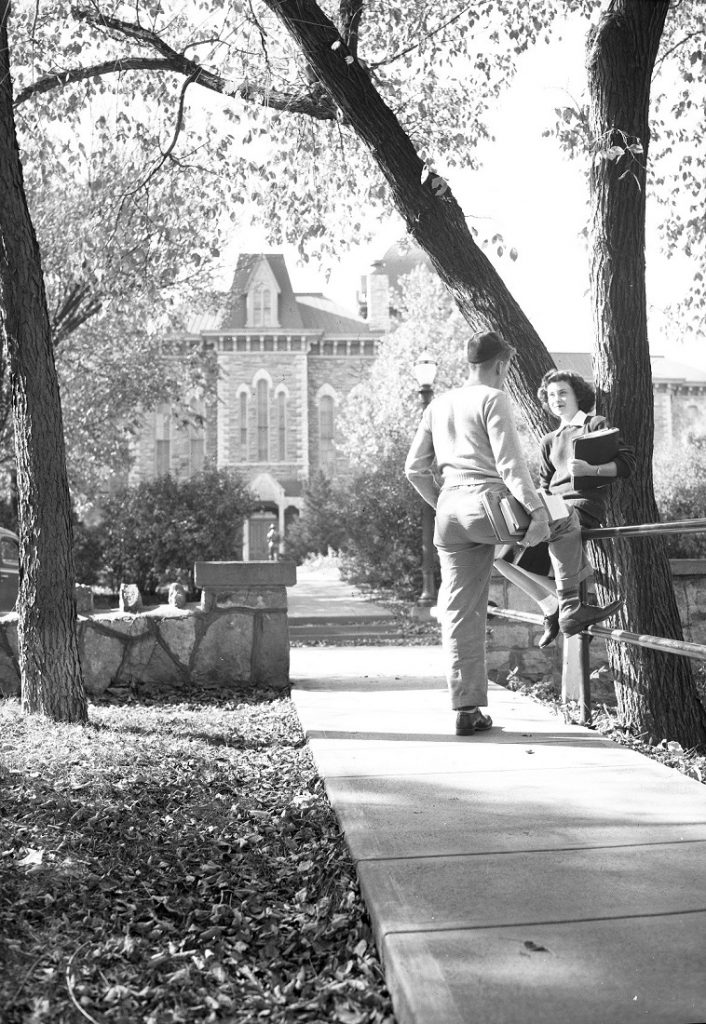World War I Letters of Forrest W. Bassett: August 21-27, 1917
August 21st, 2017In honor of the centennial of World War I, we’re going to follow the experiences of one American soldier: nineteen-year-old Forrest W. Bassett, whose letters are held in Spencer’s Kansas Collection. Each Monday we’ll post a new entry, which will feature selected letters from Forrest to thirteen-year-old Ava Marie Shaw from that following week, one hundred years after he wrote them.
Forrest W. Bassett was born in Beloit, Wisconsin, on December 21, 1897 to Daniel F. and Ida V. Bassett. On July 20, 1917 he was sworn into military service at Jefferson Barracks near St. Louis, Missouri. Soon after, he was transferred to Fort Leavenworth, Kansas, for training as a radio operator in Company A of the U. S. Signal Corps’ 6th Field Battalion.
Ava Marie Shaw was born in Chicago, Illinois, on October 12, 1903 to Robert and Esther Shaw. Both of Marie’s parents – and her three older siblings – were born in Wisconsin. By 1910 the family was living in Woodstock, Illinois, northwest of Chicago. By 1917 they were in Beloit.
Frequently mentioned in the letters are Forrest’s older half-sister Blanche Treadway (born 1883), who had married Arthur Poquette in 1904, and Marie’s older sister Ethel (born 1896).
Highlights this week include discussions about horses (“yesterday one sergeant hopped on a ‘green’ horse and was next ‘among those present’ in the hospital”), army discipline (“just now they posted a notice that any gambling would mean three months, with a cute little shotgun tickling the victim in the ribs”), new raincoats (“it’s as roomy as a young tent”), chores (“I got to get out my “housewife” which is a kit of needles, thread, pins, scissors, etc. and stab a button on my shirt. It’s a gay life”).
Thursday, Aug. 23, ‘17
Dear Marie,
You sure are mighty good to me to keep on writing. I guess you know how I feel. Be sure to write from Rockford too. Did you get the letter to Beloit? You must have had a great time in Chicago. That fortune telling gets my goat right. Or I mean it would if I let it. I suppose you are too young to go with boys. What Lauretta said gives me one good healthy pain. A girl is never too young to know herself. Lauretta may be a wise one but there is an awful lot she don’t “know about war.” All the real truth we learn at any age never will hurt any. Let the grandmothers and old maids argue to the contrary.
We are having about the same stuff every day now. You should see our big “slickers.” We just got them Tuesday as we have been having some rainy weather. It sure is some hot here when it’s clear. We get about 2 hours with the radio sets in the field every day now. This afternoon five of us run a buzzer telegraph line out in the hills. We crossed a road and hooked the wire up on a couple trees. It slacked up some way and hung down so that when one of the captains drove by in an auto, it knocked his hat off. He didn’t get very peeved about it but I guess our sergeant expected some hard words. When we got in from the field, the company went over the corral and groomed our horses. Yesterday one sergeant hopped on a “green” horse and was next “among those present” in the hospital. Most of the horses are in pretty good shape now. We had good luck in getting our pack mules, too. I wish you could see this place. There are herds of sheep and cattle, and a lot of garden truck is raised for the table. I guess the military prisoners do most of the work. Believe me, you won’t see yours truly lockstepping around with a guard behind him carrying a good healthy autoloading shotgun. The guards here carry these buckshot cannon instead of rifles. The engineers have the hardest work of any branch of service in the army. The camp here is building a line of trenches and tunnels out in the field. There used to be quite a few sham battles but I haven’t heard any for over a week. Some of the officers reserve in training here, left a few days ago. You should have seen the handshaking among those fellows as they left for different places. A fellow certainly makes some good close friends in a camp of this kind. The Signal Corps is about the big hest branch of service in the army and there is none of the “wop” class that you find the Infantry. At Jefferson Barracks about half of the 23rd Recruit Company were hardboiled Chicago roughnecks. You don’t see any dice or cards here. Just now they posted a notice that any gambling would mean three months, with a cute little shotgun tickling the victim in the ribs.
Any one that likes to split wood, mow the officers’ golf course, hoe the corn, or break rock for the new roads have my permission to start a little game of Sixty-Six. If you even hit a horse with a brush, or anything else except the open hand, you can be tried and given in the brick house with the barred windows. The regular army is strong for discipline, which is a good thing, and one has to be on the watch all the time. The officers are all very strict, but are all a pretty decent bunch. When anyone gets within 30 feet of a commissioned officer he has to salute. I have been jumped on twice for forgetting this, but haven’t had any worse luck yet. I sure am glad that I enlisted but I won’t be sorry when the time comes to gallop home. This is a great place here. I guess we don’t go to Fort Omaha after all. Well, I must go down and wash a pair of pants. Then I got to get out my “housewife” which is a kit of needles, thread, pins, scissors, etc. and stab a button on my shirt. It’s a gay life.
The first thing I’ll do will be to execute a flank movement over to my pal’s bunk and hook a piece of fudge that his girl sent him. George says that whenever he wants me to practice semaphore I am always writing. This is a pretty long letter for me. I bet you can’t read it though.
Say listen, don’t ever ask me to excuse your writing.
I hope this will find you in Beloit, O.K. Don’t forget that picture.
Yours
Forrest.
Click images to enlarge.
Sunday, Aug. 26, 1917
Dear Marie,
Your letter of Friday came this noon. I know now that you understand me and I shall say nothing more. Don’t think for a minute that I see anything silly in your letter. It is too sincere for that. Whether I can come home or not depends on the Folks, entirely. If I do come it will have to be pretty quick. Yesterday, the First Sergeant sent for me and made a typewritten report on my knowledge of, and experience with photography work. I feel certain that I will be transferred as soon as they are ready. I am sure that I have something to show for my four years of study and work, and I am confident that I’ll make good as soon as I am given a chance. I am in the furtherest advanced class of student operators but I think I could serve better in the photographic section. I hope your photographer won’t be all year in finishing you pictures. If I don’t really see you pretty soon I sure will be mighty disappointed. You ought to see me in my raincoat that was issued a few days ago. It’s as roomy as a young tent. It rained quite a few nights last week.
We have to groom over a hundred horses every day. The sergeant that was thrown last week is still at the hospital with his head bandaged and his leg tied up. He waved his cane at us as we marched by this morning. My friend, George Stock, got kicked in the head by a mule this morning but it only scratched his temple a little. I haven’t had any hard luck so far but had one close one. George Stock is about the closest friend I have ever had. He is about 25 years old, and was a teacher of Chemistry, Physics, and Mathematics in some Kans. school. These are the three studies that I liked so well at High School. We saw “The Slacker” last week at Leavenworth. It sure was good. Last night I got “La Paloma” and “The Flower Song” for the Victor Machine. Gee, but it stirred up a funny feeling when I thought how we used to play together. Someone is playing “Flower Song” now. I’d give most anything to be sitting on that piano stool now with you. Well I must stop. Will you tell me what day school starts?
Yours,
Forrest.
Take any of my music you want.
Meredith Huff
Public Services


